When veterans sell and miners exit: Bitcoin supply and demand enter a period of conflict
Original Source: BitMEX Research
Original Title: Veterans Cash Out, Miners "Defect", Bitcoin's Supply and Demand Dilemma
This year, Bitcoin's performance has almost lagged behind all major asset classes. By the fourth quarter of 2025, its performance has clearly fallen behind gold, the Nasdaq Index, the S&P 500 Index, the Hang Seng Index, and the Nikkei 225 Index. Investors who expected President Trump's support to bring a bullish market and bought Bitcoin around his 2025 inauguration have so far only received a meager return of just over 5%.
This article will delve into Bitcoin's recent weak performance, focusing on its key supply and demand dynamics. We will deconstruct Bitcoin's ever-evolving price trends by analyzing the behavior of long-term holders, changes in mining activity, and ETF capital flows.
Bitcoin's "Year of Disappointment"
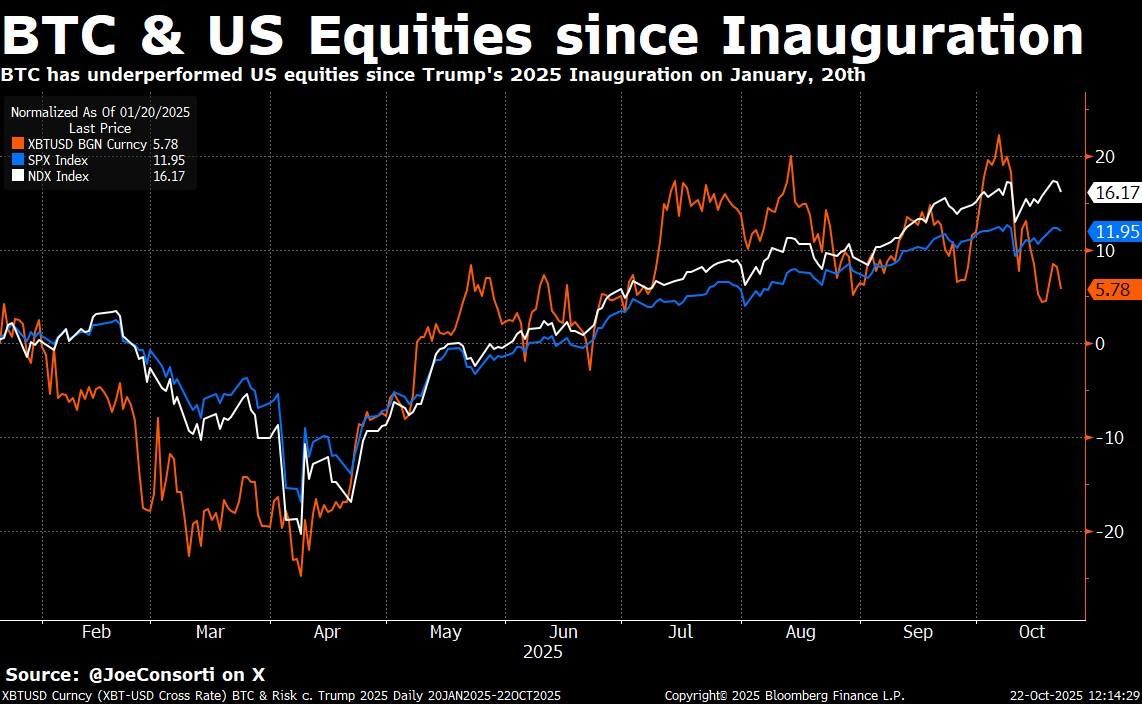
The chart above shows that since Trump's inauguration in 2025, Bitcoin's performance has lagged far behind the US stock market. The Nasdaq and S&P 500 indices have outperformed Bitcoin by more than 100%, while Bitcoin's trend has remained relatively flat.
If you bought Bitcoin on Inauguration Day (January 20, 2025), your investment return would be only 5.78%. In contrast, major stock indices such as the Nasdaq and S&P 500 have far outperformed Bitcoin over the same period. Even the traditional safe-haven asset gold has performed much better than Bitcoin.
Where is the Selling Pressure? Long-Term Holders and Miners
$100,000: The Psychological Take-Profit Level for Veterans
Bitcoin's price has been hovering around the psychological threshold of $100,000. As the price stagnates at this level, long-term holders seem to be de-risking.
Whenever BTC > $100,000, "veteran" selling increases
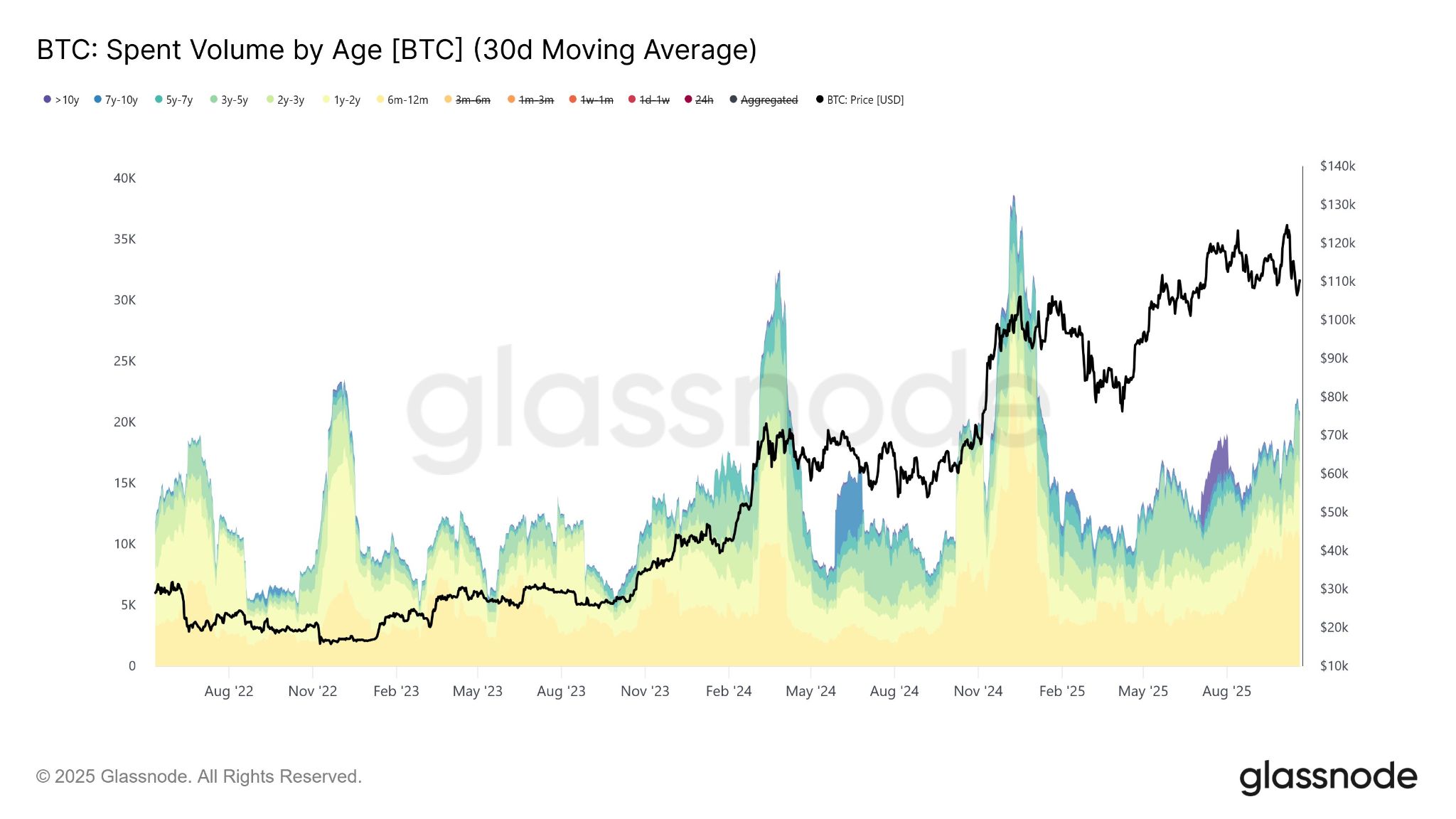
The chart above (shown in purple and blue) shows that the "Spent Volume" of long-term holders has increased, indicating that more Bitcoin "veterans" are choosing to sell after holding for many years. The chart reveals that when BTC price exceeds $100,000, there is a significant increase in old coin trading activity, reinforcing the view that early Bitcoin holders are selling their positions at current price levels.
We speculate that as other asset classes (especially in the AI sector) have soared this year, many tech-focused "veterans" seem to be rotating from Bitcoin into other fields to diversify and seize new opportunities. This shift has created persistent upward selling pressure, limiting every rally this year.
Tracking Bitcoin Whales
This selling pressure may lead to a frustrating market environment, causing Bitcoin to be stuck in a choppy trend this year rather than achieving meaningful breakthroughs. To trigger a potential rally, Bitcoin may first need to break below the $100,000 support level to effectively flush out these sellers.
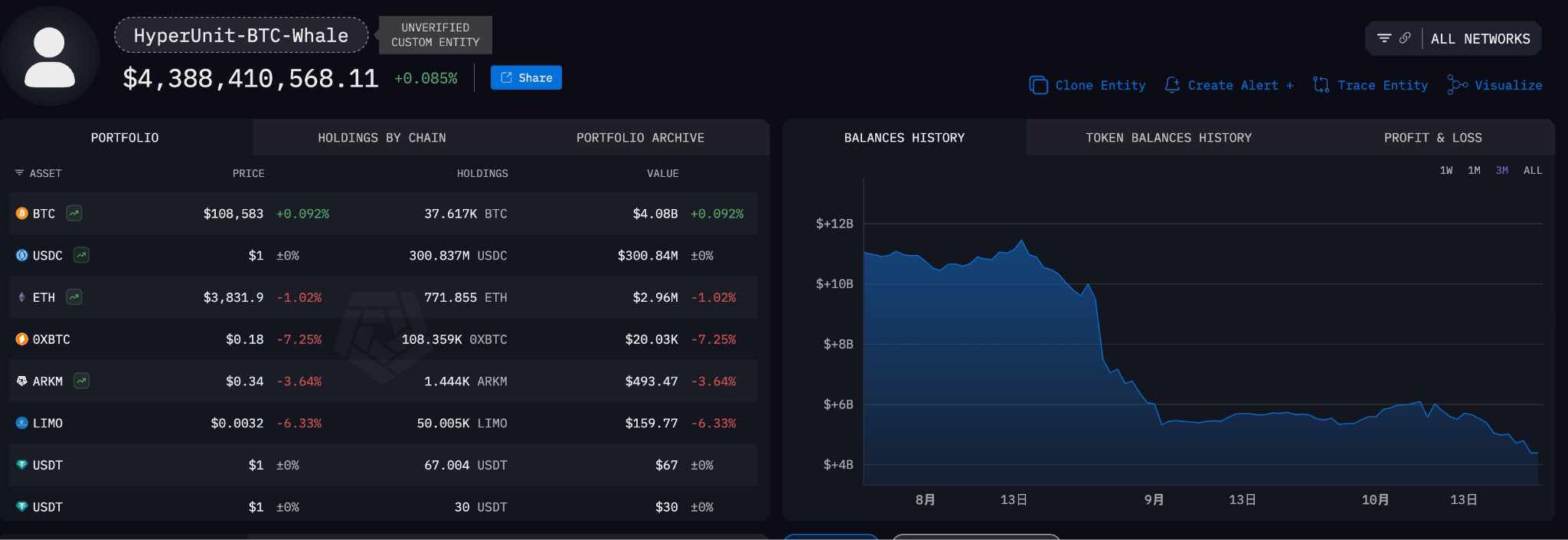
One of the most important wallets driving this behavior can be tracked on Arkham Intelligence. In October alone, this wallet deposited over $600 million worth of Bitcoin to different exchanges, which is a key indicator for monitoring whether market pressure is easing. You can explore this wallet here.
Bitcoin Miners: From "Network Guardians" to "AI Data Centers"
As Bitcoin miners shift part of their business from Bitcoin mining to AI-driven high-performance data centers (HPC), Bitcoin's security may face new risks. The transition of miners to AI could weaken Bitcoin's decentralized network and lead to a long-term decline in hash rate.
-
Core Scientific ($CORZ): Signed a 12-year HPC hosting agreement with CoreWeave, converting existing 100 MW infrastructure and paving the way for a broader merger vote at the end of the month.
-
Iris Energy ($IREN): Has expanded its AI cloud to over 23,000 NVIDIA GPUs and obtained "Preferred Partner" status from NVIDIA.
-
TeraWulf ($WULF): Secured a 10-year AI hosting contract exceeding 200 MW, valued at up to $8.7 billion.
-
Bitdeer ($BTDR): As one of the most aggressive participants, plans to convert part of its Norway Tydal mine (175 MW) and Ohio Clarington facility (570 MW capacity) into AI data centers by the end of 2026, targeting over 200 MW of AI IT load.
-
CleanSpark ($CLSK) / Riot Platforms ($RIOT): Even traditional pure mining companies like CleanSpark and Riot Platforms are designing new campuses around "dual-use computers".
Impact of a Weakened Bitcoin Network: Unmanifested Risks
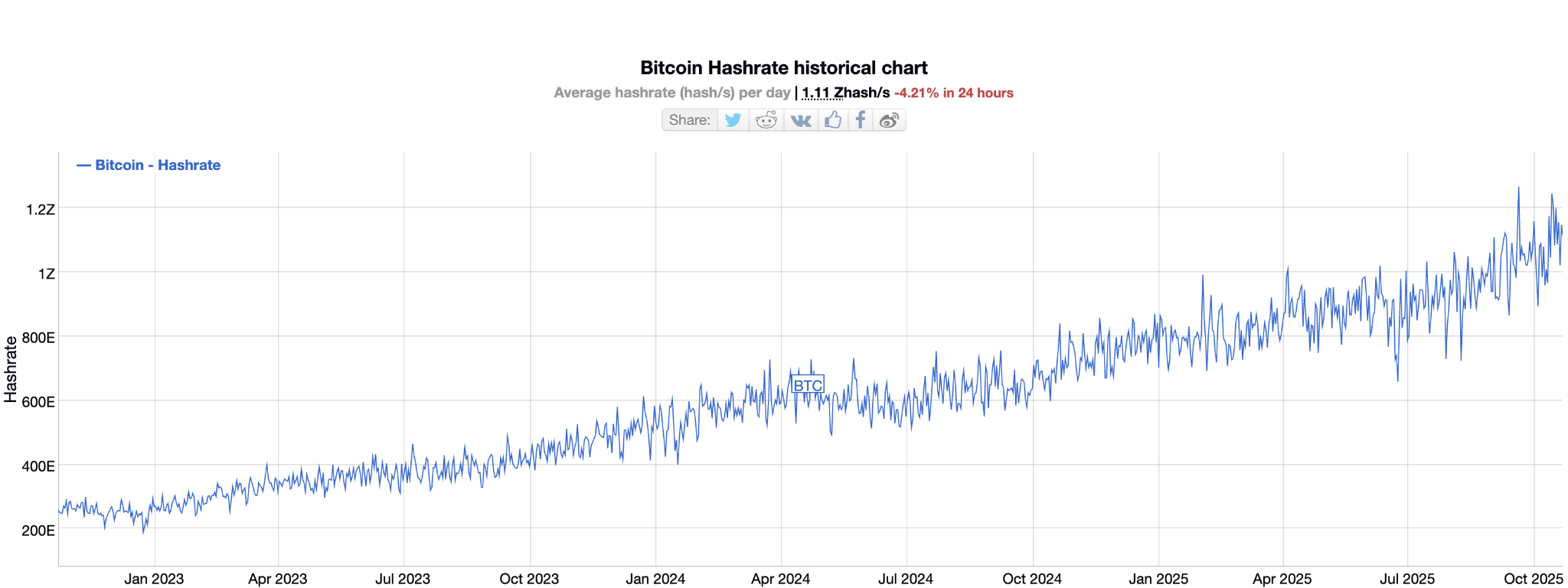
As miners no longer maintain Bitcoin network security, the resulting decline in hash rate may reduce network security. A less secure Bitcoin network is less attractive to institutional investors, which could lead to reduced demand and ultimately depress prices.
Miners who once provided critical support for Bitcoin infrastructure are now turning their attention to more profitable businesses in AI and cloud services. This migration has raised concerns about the future prospects of Bitcoin as a store of value and decentralized asset.
Demand-Side Dynamics: ETF Inflows and Government Seizures
ETF: The Biggest Demand Driver

This chart shows the correlation between Bitcoin ETF inflows and price changes. When ETF inflows are strong, Bitcoin prices rise; but since mid-July, the lack of capital inflows has led to price stagnation, highlighting the important role of ETFs in driving demand.
In 2025, Bitcoin ETF inflows are highly positively correlated with Bitcoin prices. It shows that earlier this year, ETF inflows significantly drove price increases—however, starting from July 10, capital inflows stalled, and Bitcoin prices also stagnated.
Limited growth in ETF inflows: While institutional capital flowing in through Bitcoin ETFs is seen as a strong indicator of Bitcoin's maturity as an asset class, the lack of sustained inflows suggests that institutional interest may have peaked.
US Government Seizures and Their Impact on Bitcoin's Viability
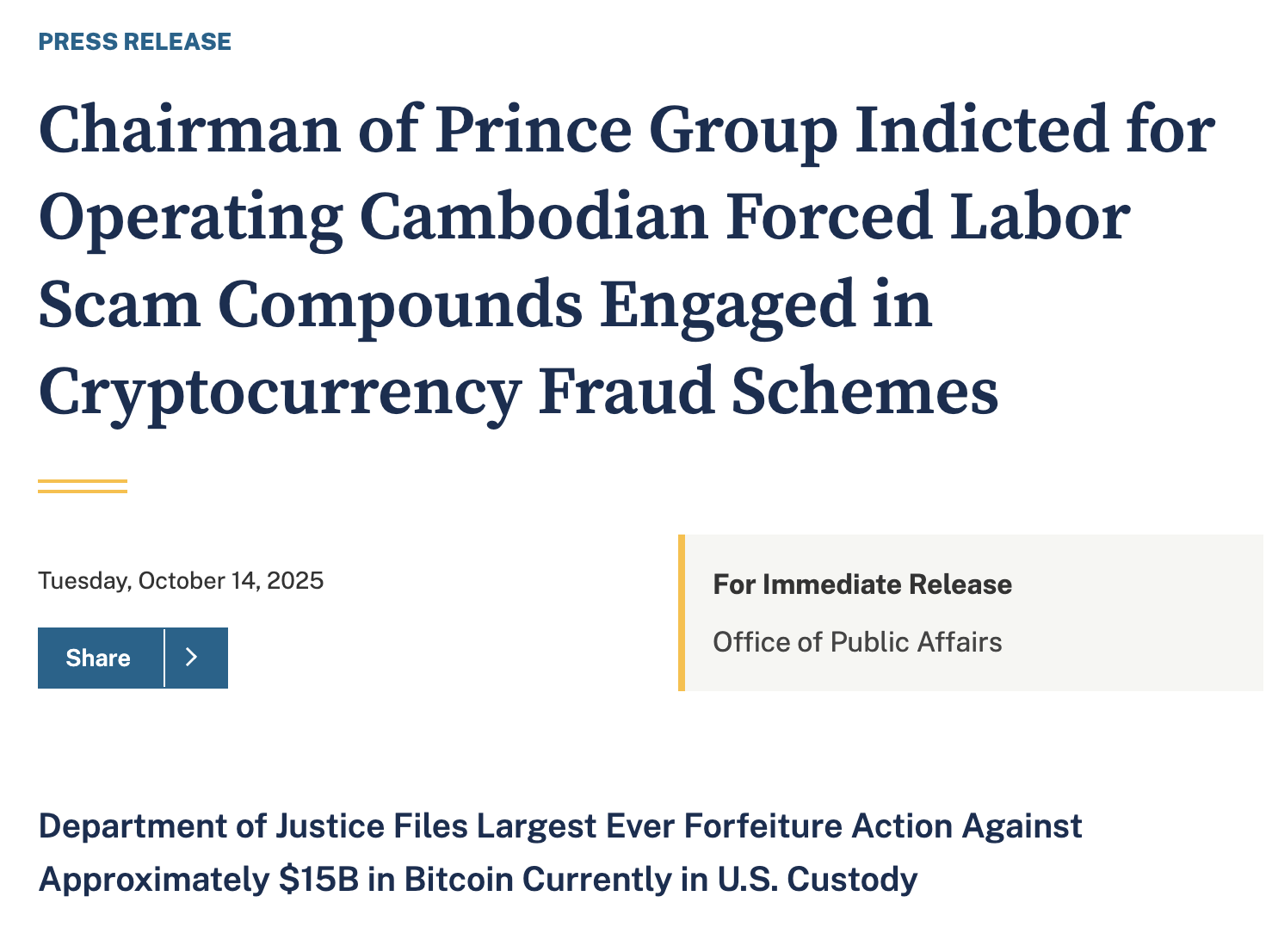
One of Bitcoin's core narratives is "resisting government control." However, recent events are challenging this premise. The US government recently seized billions of dollars worth of Bitcoin through law enforcement actions. Although there is no issue with Bitcoin's own security, this action has raised market concerns about Bitcoin's status as a censorship-resistant asset. When an asset can be seized by the government, its value as a "hedge against government" is discounted. The strengthening of government censorship capabilities may also be one of the reasons why some "veterans" have lost confidence and chosen to sell.
Shift in Safe Haven: The Quiet Rise of Privacy Coins
As the transparency of the Bitcoin blockchain (easy to monitor) and government intervention increase, some investors seeking true anonymity are turning to privacy coins such as Zcash.
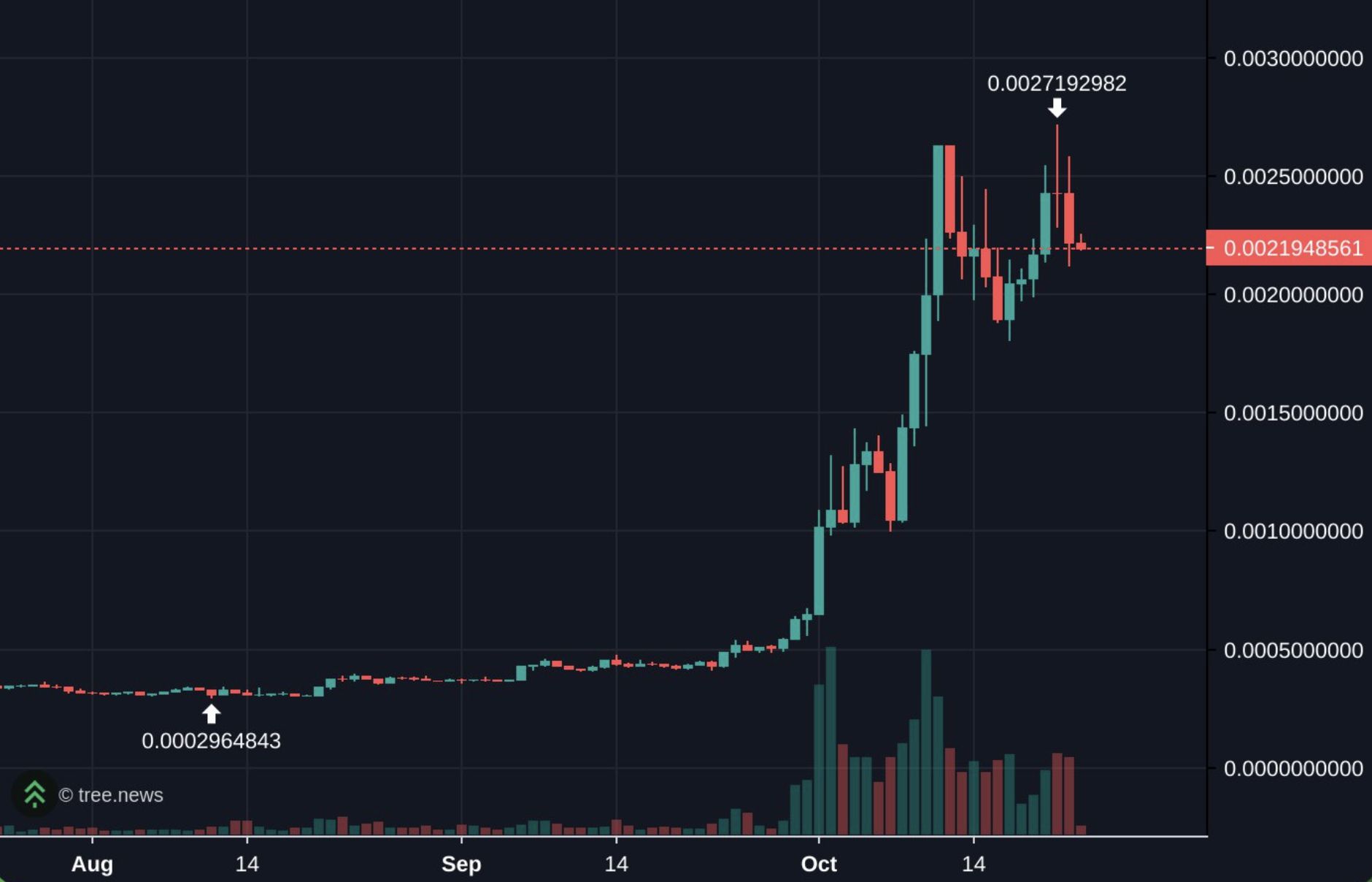
The ZEC/BTC exchange rate chart shows that when Bitcoin's viability is questioned, privacy coins such as Zcash (ZEC) may benefit.
Conclusion: Bitcoin at a Crossroads
In summary, Bitcoin's weak performance in 2025 is the result of the combined effects of supply and demand:
-
Supply Side (Selling Pressure): Long-term holders are taking profits at the $100,000 threshold, while miners are attracted by higher profits in AI and are transitioning, bringing potential network security risks.
-
Demand Side (Buying): ETF capital inflows have stalled since mid-July, while government regulation and seizures have shaken some investors' confidence in its decentralized value.
Outlook: The key question is whether Bitcoin can regain its upward momentum or will remain range-bound under continued supply pressure. Investors should closely monitor the following two key signals to determine a shift in market sentiment:
-
Whales stop depositing Bitcoin to exchanges.
-
The net asset value (NAV) and capital inflows of Bitcoin ETFs resume growth.